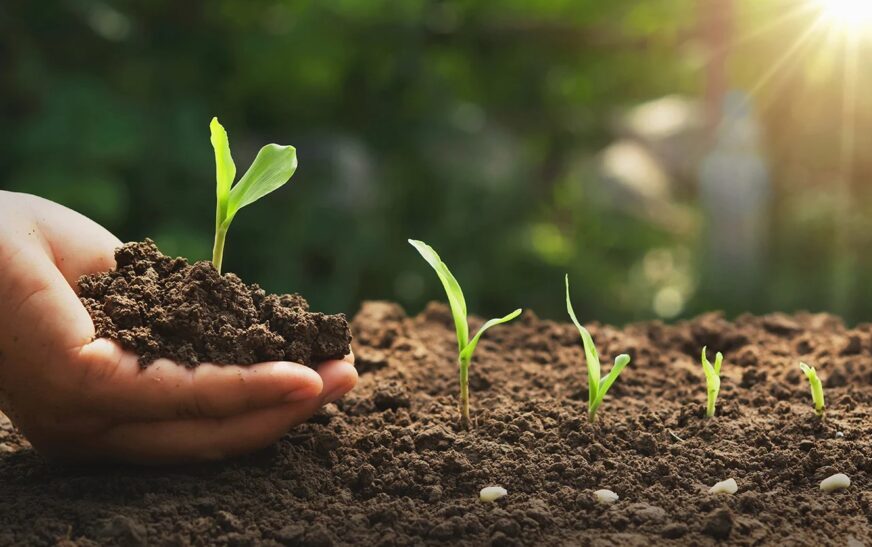Creating healthy soil compost at home is an eco-friendly and cost-effective way to enrich your garden soil, reduce waste, and contribute to a healthier environment. Composting transforms organic waste into nutrient-rich humus that can improve soil structure, water retention, and fertility. In this comprehensive guide, we’ll explore how you can make healthy soil compost at home, with practical tips, step-by-step instructions, and answers to frequently asked questions.
Healthy Soil Compost
Healthy soil compost is the result of decomposed organic matter, such as kitchen scraps, yard waste, and other biodegradable materials. This compost enhances the soil’s ability to retain moisture, supports beneficial microorganisms, and provides essential nutrients for plants. By composting at home, you not only improve your garden’s health but also reduce your carbon footprint.
Benefits of Making Healthy Soil Compost
Nutrient-Rich Soil: Compost adds vital nutrients like nitrogen, phosphorus, and potassium to the soil, promoting robust plant growth.
Improved Soil Structure: Compost helps create a crumbly soil texture, enhancing aeration and root penetration.
Water Retention: Compost increases the soil’s ability to retain water, reducing the need for frequent watering.
Waste Reduction: Composting diverts organic waste from landfills, reducing methane emissions and lowering your household’s environmental impact.
Cost Savings: By creating your own compost, you save money on commercial fertilizers and soil amendments.
Getting Started with Composting
Choose a Composting Method
There are several composting methods you can choose from, depending on your available space and resources:
Backyard Composting: Ideal for those with a garden or yard, using compost bins or piles.
Vermicomposting: Uses worms to break down organic matter, suitable for indoor or small-space composting.
Bokashi Composting: An anaerobic method that ferments organic waste using a special bran, perfect for urban composters.
Select a Compost Bin or Pile Location
Choose a well-drained, partially shaded spot in your yard for your compost bin or pile. Ensure it’s accessible for adding materials and turning the compost. For indoor composting, select a suitable container that fits your space.
Gather Compostable Materials
Healthy soil compost requires a balance of “greens” (nitrogen-rich materials) and “browns” (carbon-rich materials):
Greens: Fruit and vegetable scraps, coffee grounds, tea bags, grass clippings, and manure.
Browns: Dried leaves, straw, wood chips, cardboard, and paper.
Building Your Compost Pile
Layering Organic Materials
Start your compost pile with a layer of coarse materials like twigs or straw to promote aeration. Alternate layers of greens and browns, aiming for a ratio of about 2:1 (browns to greens). This balance ensures proper decomposition and prevents odors.
Maintaining the Pile
To make healthy soil compost, maintain the right conditions:
Aeration: Turn the compost regularly to introduce oxygen and speed up decomposition.
Moisture: Keep the pile moist, similar to a wrung-out sponge. Add water if it’s too dry and browns if it’s too wet.
Temperature: A well-maintained compost pile will heat up, killing pathogens and weed seeds. Aim for a temperature of 130-160°F (55-70°C).
Slow Decomposition
If decomposition is slow, the pile may need more greens or better aeration. Add fresh greens and turn the pile more frequently.
Pests
To avoid attracting pests, avoid adding meat, dairy, and oily foods. Use a bin with a lid or cover your pile with a layer of soil or browns.
Harvesting Your Healthy Soil Compost
When Is Compost Ready?
Compost is ready when it’s dark, crumbly, and has an earthy smell. This process can take anywhere from a few months to a year, depending on the materials and conditions.
Using Your Compost
Incorporate your finished compost into garden beds, use it as mulch, or mix it with potting soil. Healthy soil compost improves plant health and productivity, making your garden thrive.
FAQ about Healthy Soil Compost
Q: What materials should I avoid adding to my compost pile?
A: Avoid adding meat, dairy, oily foods, and diseased plants as they can attract pests and cause odor problems.
Q: How often should I turn my compost pile?
A: Turn your compost pile every 1-2 weeks to introduce oxygen and speed up the decomposition process.
Q: Can I compost in the winter?
A: Yes, you can compost in the winter, but the process may slow down due to lower temperatures. Insulate your pile with straw or leaves to maintain warmth.
Q: How do I know if my compost is too wet or too dry?
A: Your compost should be moist like a wrung-out sponge. If it’s too dry, add water; if it’s too wet, add more browns.
Q: Can I compost weeds?
A: Yes, but avoid adding weeds with seeds to prevent them from spreading in your garden.
Conclusion
Creating healthy soil compost at home is a rewarding process that benefits your garden and the environment. By following these steps and maintaining the right conditions, you can produce nutrient-rich compost that enhances soil health, conserves water, and reduces waste. If you need expert assistance or want to ensure your composting efforts yield the best results, consider reaching out to RototillerGuy. Start composting today and contribute to a greener, more sustainable future with the help of RototillerGuy.
Feel free to submit more guest posts through Links Building Servcies - Best Prices. Buy Author Account / 1$ Guest Post Here






















